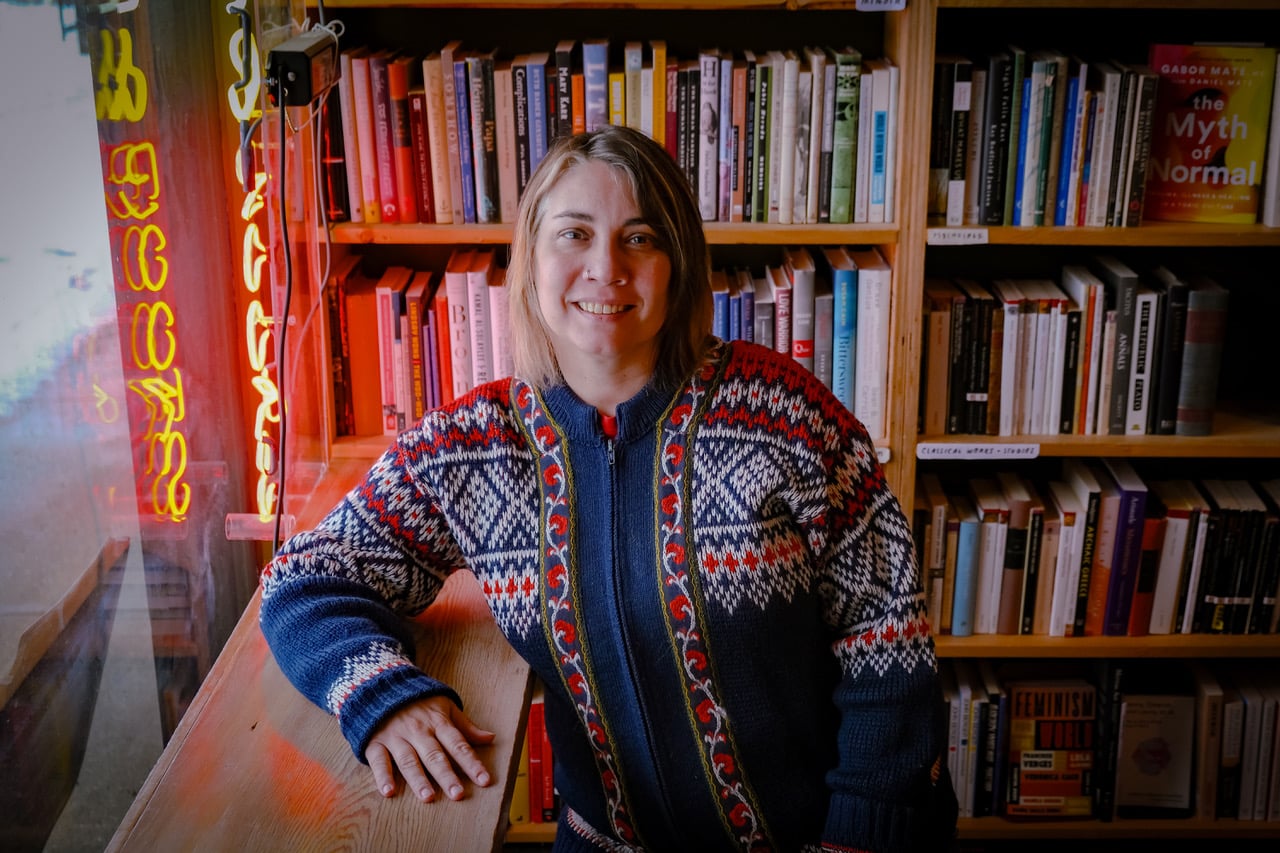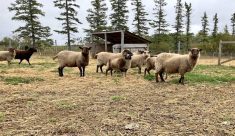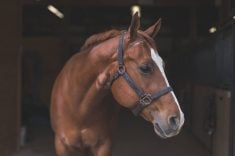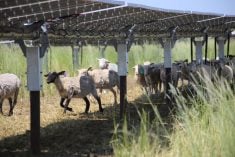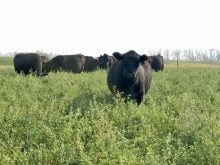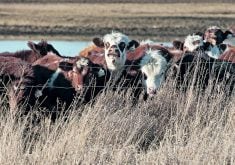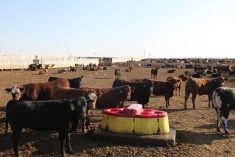Sheep shearing is becoming a lost skill and with the Alberta flock growing, the need for more shearers is becoming more pressing.
Rod and Jacquie Turuk have found a creative way to cope.
“We couldn’t find a shearer at the right time for us, so we decided to host the sheep-shearing workshop,” said Jacquie.
“Hopefully, we’ll get a couple of shearers out of this.”
The Turuks have hosted the workshop for the past two years and 13 students braved chilly early March weather to learn to shear on the Turuks’ flock of 140 Dorset/ Charollais cross sheep.
Read Also
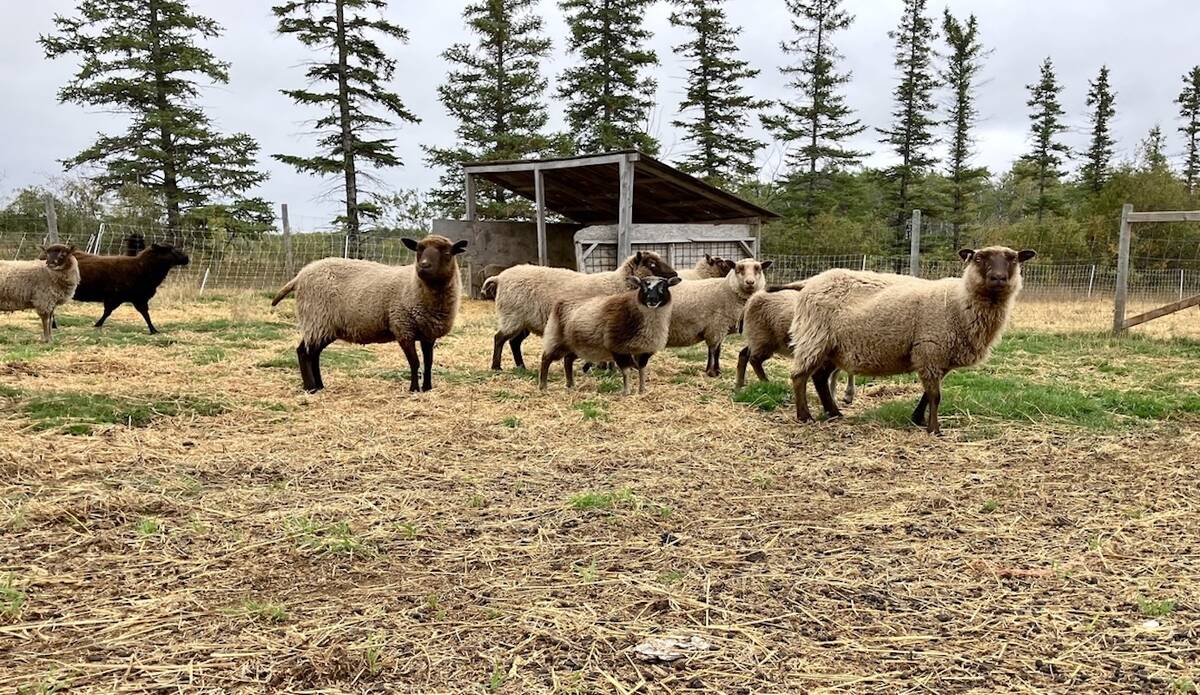
Mosquito-borne virus could be devastating to sheep breeding operations
Cache Valley virus, a mosquito-borne disease that infects small ruminants, could be a devastating hit to small operations.
The Turuks organized their first workshop in collaboration with the Alberta Lamb Producers, and then arranged the course themselves this year. It was taught by Laurence Read, who emigrated from New Zealand 22 years ago and sheared his first sheep when he was eight years old.
The shortage of sheep shearers is a worldwide problem, said Read, who raises sheep and cattle in Silver Valley as well as operating Sheepo, his shearing business. He has been conducting shearing workshops for four years.
Part of problem is that sheep shearing is seasonal work. Most people shear before they lamb, so the Canadian shearing season runs from December to June. Some professional shearers from New Zealand and Australia will shear Down Under before travelling to England and North America so they can work year round.
Biosecurity and new safety requirements have complicated the lives of shearers. In the past, sheep owners used to bring all their sheep to one location for shearing, but Read said he doesn’t believe this is a good practice any longer.
Patience
Patience is the biggest secret to shearing, said Read. People who don’t have the proper technique or take the time to shear probably can cut or even kill the sheep by cutting it severely. Even the most experienced of shearers will nick or cut a sheep every once in a while.
“The main thing to remember is to keep the sheep’s skin firm so there are no wrinkles,” he said. “You also want to keep the animal comfortable so it doesn’t kick you.”
Top shearers can command as much as $4 per sheep and can do the job in about two minutes. The world record is 28 seconds, but an experienced shearer will do about 20 sheep an hour and Read said he can shear about 150 in a day comfortably. Some shearers also do hoof trimming and vaccinations.
Read teaches the Tailyhigh pattern, a New Zealand method that is one of the most commonly used worldwide. This method involves 48 passes, known as “blows,” performed in a specific order.
“A big part of sheep shearing is handling,” he said
He teaches students some of the main pressure points on a sheep, including a point on the jaw that can stop a sheep from kicking.
“People think that sheep are little and they aggressively manhandle them and it just doesn’t work,” he said.
It’s not for everyone and Read said it not uncommon for attendees at his workshop to vow they’ll never shear a sheep again, but the Turuks’ workshop attracted participants from across the province
It was the first workshop for Jeremy Percival who literally took matters into his own hands last year after becoming frustrated with not being able to find a shearer. He bought a set of clippers, which retail for about $1,600, watched sheep-shearing videos on YouTube, and was able to shear the flock of 100 Columbian and Dorset ewes he owns with his mother-in-law. He said the opportunity to learn by having someone watch his technique was phenomenal.
“Lots of people are scared to do this because you can really cut the sheep,” he said. “But a lot of the times, when you cut a sheep, it’s because you’re doing your technique wrong.”
Percival believes the skill is a good one to have and could offer him some opportunities for future income generation. While sheep flocks are growing in Alberta, most of the people who are buying flocks are older, which makes the need for shearers in Alberta even more pressing, he said.
———
“Peoplethinkthatsheeparelittleandtheyaggressivelymanhandlethemanditjustdoesn’twork.”
LAURENCE READ
SHEEP SHEARER

